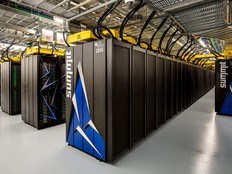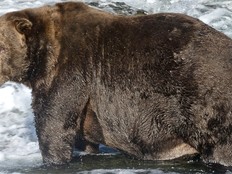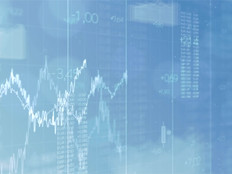Hardware
Drones Aid NOAA Scientists with Hurricane Tracking and Animal Monitoring
Scientists working for the National Oceanic and Atmospheric Administration keep track of nature's events from the sky to the bottom of the ocean. Uncrewed aerial systems — UAS, or drones — have become a critical tool in this work. Hurricane hunters can drop drones into a storm to measure its intensity, while biologists use them to track populations of endangered species in distant locations. A mixture of UAS borrowed from the Defense Department and commercial off-the-shelf drones makes for a must-have technology for NOAA scientists, who are looking forward to the next generation, powered by artificial intelligence.
If you enjoyed this video, check out the other videos in our Feds in the Field series:
- USDA Drones Search Irrigation Water for Contamination
- The Library of Congress Uses Modern Tech to Digitize American History
- In Space, Printing Happens in All Dimensions
- The VA Provides Health Care Via Smartphones
- Robotic Process Automation Does the Work at the Defense Logistics Agency
- Smart Building Technology Saves the State Department Time and Money
- Safe at Home: How 3 Agencies Made the Pivot to Remote Work
- Army Ramps Up Augmented Reality Training with COTS-Inspired Gear
- National Park Service Relies on Webcams to Attract Far-Flung Nature Fans
- Census Bureau Relied on Tech to Make the 2020 Count Happen
- Oak Ridge National Laboratory Prepares for Its Exascale Supercomputer
- NIST Aims a Camera at the Mechanics of Fire
Participants
Katie Sweeney, Biologist, Alaska Fisheries Science Center Marine Mammals Laboratory, National Oceanic and Atmospheric Administration
Capt. Phil Hall, Director, Uncrewed Systems Program, Office of Marine and Aviation Operations, NOAA
Joseph Cione, Research Meteorologist, Atlantic and Oceanographic Meteorological Laboratory, NOAA
Video Highlights
- Drones are a common tool for NOAA scientists who need to collect information from remote or dangerous places.
- Hurricane experts track the intensity of storms through uncrewed aerial systems dropped into active cyclones, while biologists use them to more accurately count and monitor species such as sea lions and seals in Alaska.
- Future drones will be powered by artificial intelligence, which will enable better data capture and observations.






